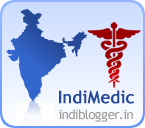Oral herpes
Herpes is a viral infection, found exclusively in humans. It is usually caused by Herpes Simpled. Herpes simplex is of two types. type I which is responsible for 80% of the Herpatic attacks and type II which is responsible for the balance. It spreads through saliva, mucous membrane and skin. When it is in the mouth it is called orolabial herpes or Herpes Labialis. In the fingers, it is herpes digitalis, in the eyes, herpatoconjunctiva or herpes occuli, in the brain it is herpes encephalitis.
Colloquially it is called cold sores, or fever blisters.
Oral herpes is particularly seen in children between 1-2yrs.
Many a times herpes is asymptomatic, sometimes even latent.
Latent Herpes is caused by HSV-2 virus which is not only recurrent but can get activated by stress, physical or emotional. Many a times this becomes a recurrent factor. The virus exhibits a cyclic pattern of activation and deactivation.
Once a virus enters the body it takes 2-12days for the symptoms to show. This is called the incubation period.
Once the disease sets in there is pain burning tinglisng, itching, then clusters of blisters appear, a few days later they become dry and a scab is formed. The blister appears shallow and grey with a red base.
When these oral sores appear eating and drinking becomes painful. Then the lymph nodes of the neck swell and become painful.
In young adults and teenagers the tonsils get inflamed and turn grayish.
When to seek medical aid—
• When eating and drinking becomes painful.
• In children if the child requires less change in diapers.
• Signs of dehydration like—drowsiness, irritability, dry mouth.
• If you are not sure what causes the sores.
• If the child is younger than 6months to prevent further complications.
Usually only physical and clinical examination is done.
Sometimes lab tests called Tzank smear is done
Home care:
• Drink lots of fluids.
• Anesthetic mouthwash or cream can be used.
• If required Ibuprofen or acetaminophen can be taken to handle fever and body ache.
When it comes to alternate therapies homeopathy deals with laws of similarity. So I am a little confused.
My colleague from the College of Homeopathy say they have had good response with vaxinotixnum.
While another colleague likes to treat it like a cold sore.
• Before the sores arrive
o Natrum muriacticum – prevents or stops blister at the tingling stage.
o Apis mellifica – prevents blisters from forming
o Lachesis or sepia once/24hrs very useful in women who tend to have blisters before periods.
• After the sores have arrived
o Arsenicum album eruptions are many small blisters with burning sensation.
o Rhus toxicodendron continue treatment until blisters start to crust
o Calendula to soothe the pain associated with cold sores.
• When crusting occurs
o Mezereum if you blisters are filled with a whitish liquid and rapidly evolve to itch crusts.
o Graphite's if you have burning stinging vesicles that are filled with a yellowish liquid that turn to even more itchy crusts.
It is best to take homeopathic medication after consulting a qualified homeopath. As the medication system is very precise,and involves many factors.
Wednesday, June 9, 2010
Subscribe to:
Post Comments (Atom)

No comments:
Post a Comment